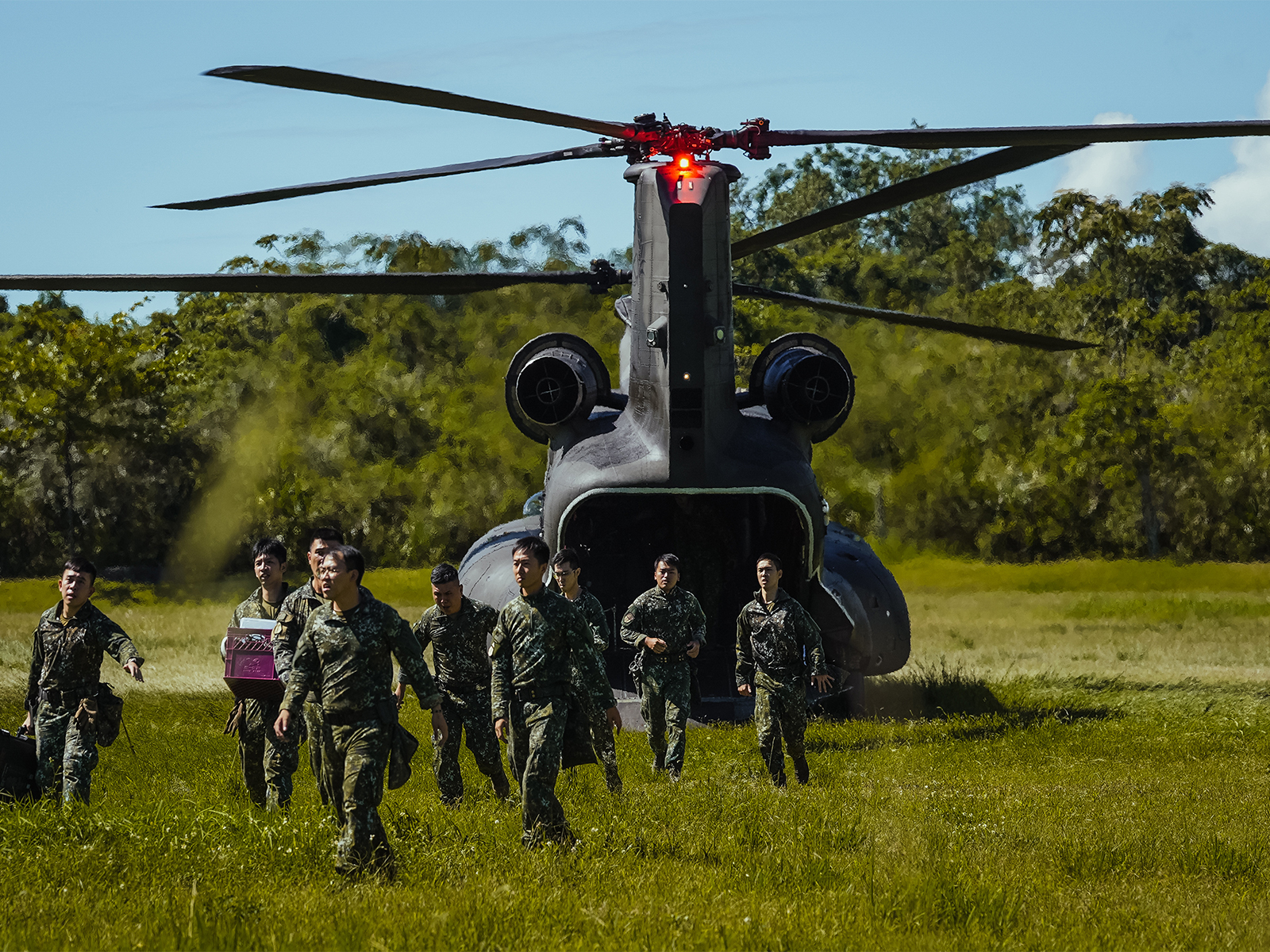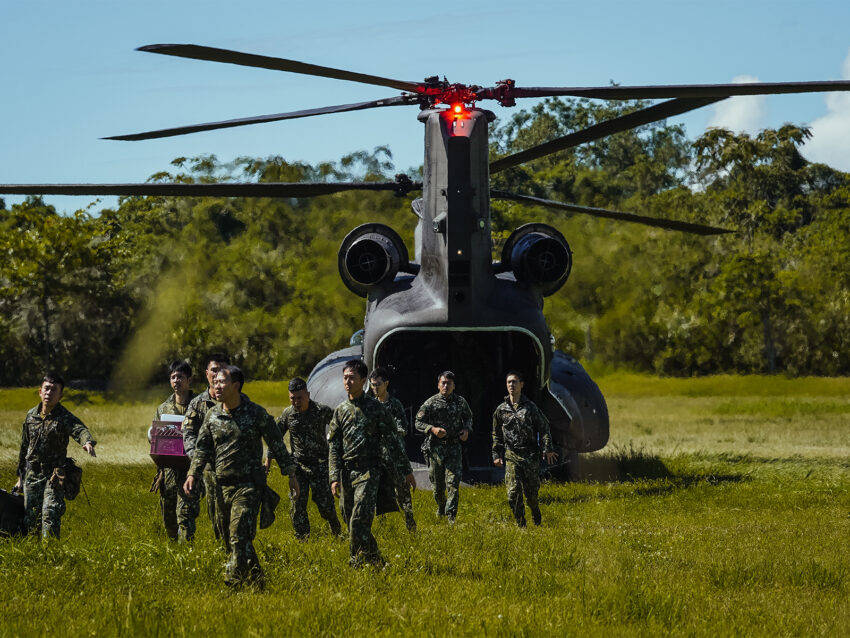
Hong Kong, October 8 (ANI): The world has been watching the Ukraine conflict carefully. What was supposed to be a short and sharp Russian “military operation” has turned into a bloody and drawn-out war of attrition. The Russia-Ukraine war is the first full-scale combat between peer adversaries in many years, and there are numerous lessons to be learned.
China and its People’s Liberation Army (PLA) are watching more closely than most, as its friend Russia got itself bogged down in static warfare after its invasion failed to steamroll Ukraine. Kyiv, backed by Europe and the USA, has utilised numerous Western weapons and platforms in defence of its homeland. Obviously, it is of acute interest to the PLA to know what is working and what is not.
Mick Ryan, a former Australian Army major general, wrote, “It is unlikely that China will start its learning and adaptation as slowly in a conflict as Russia did in 2022. The Chinese have been active learners of modern war since the Falklands conflict, and much of their ongoing military transformation stems from their observations of the 1991 Gulf War.” He added that the PLA is a “careful and meticulous students of modern warfare, particularly the US way of war”.
The Ukraine war has transformed the way combat is conducted, and in fact it is often called the “first drone war”. Unmanned systems – in the air, on the ground or in water- are revolutionizing the way future wars will be fought.
Like Vladimir Putin with his quest to conquer Ukraine, China is not shy about expressing its desire to subjugate Taiwan either. Yet successfully invading Taiwan is another question altogether. Russia failed to capture Ukraine even though it could simply drive across land borders from Russia and Belarus. For China to successfully bridge the rough waters of the Taiwan Strait adds new levels of complexity and difficulty.
Ryan shared, “One lesson that has been reinforced for the Chinese military is the requirement for greater integration of air, land, sea, rocket, space and information activities. The development of joint theater commands and the refinement of the command relationships for the PLA Rocket Force and its space, information and cyber activities is representative of their learning in this area.” Many of China’s military transformation programs commenced before 2022, and the Ukraine conflict will only have reinforced to China that it is on the right track.
Last month, Kevin Pollpeter of the China Aerospace Studies Institute (CASI), under the auspices of the US Air Force, published a report entitled “Ten Takeaways from the Russia-Ukraine War and Their Implications for a Taiwan Conflict”. His paper applied lessons from Ukraine to any potential conflict between the USA and China over Taiwan.
Each of his ten points is described briefly below. Firstly, he identified the moral aspect. In Ukraine, a smaller military has resisted a larger one, plus it has displayed greater willingness to fight. However, there are questions over the resolve of Taiwanese people to fight for their freedom against China.
Secondly, Pollpeter posited, demographics are not destiny. Russia has sustained 7,90,000 casualties since 2022, or around 2.2% of its 20-40-year-old males, but the country continues to fight. China now has a declining population, but it is believed heavy PLA losses would have even less impact on its prosecution of any military campaign. This is especially true because China’s national security apparatus would quash any dissent.
Thirdly, quantity has a quality all of its own. Conflicts usually take longer than the aggressor expects. “At the strategic level, wars of attrition will be won by the ability to mobilize personnel, industrial capacity that can replace materiel losses, geographical depth to absorb defeats, and technologies that prevent rapid gains.”
China has advantages in all of these, and its defense industry is already on a war footing. Consider its precision strike capabilities, for instance, as the PLA has the world’s most diverse arsenal of ballistic and cruise missiles.
Next, Pollpeter highlighted the interconnectedness of the world’s military-industrial complex. Russia has been able to focus its economy on supporting the war despite Western sanctions. Ironically, China is described as the “decisive enabler” of Moscow’s war. As an example, Reuters recently reported that Chinese drone experts have visited state-owned Russian drone-maker IEMZ Kupol more than six times since the second quarter of 2024, purportedly to conduct technical development work. The company also received shipments of Chinese-made A140 and A900 loitering munitions, plus other types of surveillance drones, via a Russian intermediary TSK Vektor.
As with Russia, it would be difficult to isolate China in any future war, plus Taiwan’s sovereign status counts against it too. This is why Beijing continually argues that Taiwan is not a valid country.
Fifthly, the CASI report highlighted how nuclear messaging is as alive now as it was in the Cold War. Moscow has used nuclear saber rattling, and China would likely do the same in any Taiwan war. Remember too that China is conducting the world’s fastest-ever build-up of nuclear weapons – there must be a reason for this.
Then, Pollpeter mentioned the importance of logistics. Russia experienced huge logistic deficiencies, and the USA and Taiwan would face them too in any war with China. A PLA air and sea blockade would attempt to cut Taiwan off from supplies, and the island does not have the benefit of roads and railways bringing supplies over friendly land borders like Ukraine does. The US military would be stressed trying to support Taiwan.
The seventh point was the rise of the machines, i.e. uncrewed systems. Although they are used for lethal attacks, the most common use of aerial drones is for intelligence, surveillance and reconnaissance. Any conflict over Taiwan would accelerate the innovative use of unmanned systems.
Next, the Starlink internet constellation has been a game-changer for Ukrainian communications, and it now has 42,000 Starlink terminals. Any war with China would immediately spread into space to deprive Taiwan and the USA of access to satellite communications and imagery.
The ninth factor in the CASI paper is the question of whether anybody could actually achieve air supremacy. Ground-based air defense has proved decisive in Ukraine. The USA has long relied upon air supremacy, but China has an incredibly dense air defense umbrella.
Finally, Pollpeter said cyberwarfare has become a decisive factor in modern conflicts.
Russia used cyber operations before and during the war to devastating effect.
Unfortunately, the US intelligence community notes that China “remains the most active and persistent cyber threat to US government, private-sector and critical infrastructure networks”. Its cyber capabilities are dangerous to all. Returning to Ryan, formerly of the Australian Army, he too compared and contrasted the Ukrainian and Pacific theaters. He highlighted four filters applicable to the Pacific’s situation, which differentiate it from Ukraine. He listed them as: geography and distance; terrain, vegetation and weather; political and cultural environment; and the capability of potential adversaries.
Addressing each in turn, the Pacific encompasses vast distances, and much of it is open ocean. However, campaigns such as China versus Taiwan would cover a much smaller area. It would require a balance of air, naval and land operations from China against Taiwan, whereas Ukraine is primarily a land conflict. It will be riskier for China and the USA to move forces to Taiwan, of course. Also, meshed networks of sensors are harder to achieve, although the potential for surprise is greater in the Pacific.
While China would like to achieve a quick and decisive victory against Taiwan before the USA can intervene effectively, Beijing would still be prepared for the long haul.
China believes it has the advantage in terms of its defense industrial base, even if the USA has a technological edge.
The second filter of terrain, vegetation and weather also shows up differences to Ukraine. Taiwan is 60% covered in vegetation, which improves concealment, whilst its typhoon season lasts from May to November, which would affect military operations such as sea crossings and flights.
The third filter, the political and cultural environment, is very different to Ukraine.
There is no equivalent of NATO in Asia-Pacific, and China has been successful in corroding regional multilateral alliances. China, like Russia, uses disinformation to weave its own narrative, and it would hope to erode the West’s resolve. Beijing is also attempting to curry favor around Asia-Pacific, simultaneously breaking down the existing US security framework. This effort has accelerated thanks to President Donald Trump’s erratic policies.
China will also want to prevent a strong Taiwanese leader from unifying the nation and gathering international support, such as Volodymyr Zelenskyy has done for Ukraine.
The capability of potential adversaries is the fourth filter mentioned by Ryan. China’s military and industrial capacity is far greater than Russia’s, plus it would be fighting on a home front in the Western Pacific and Taiwan. It has a huge population it can mobilize in the event of a prolonged conflict. Chairman Xi Jinping recognizes that military leaders – able or allowed to think laterally – are a serious weakness in the heavily centralized PLA, and he is trying to redress that. The PLA also requires about 6,60,000 conscripts who serve for two years, many of them poorly educated. However, it has the mass to overcome such weaknesses.
Ryan reckoned, “Technological breakthroughs are one area in which China in the Pacific may have a greater capacity for surprise than Russia in Ukraine. China has a much broader and more sophisticated research and development capacity than Russia (or any other authoritarian nation in the world), and it will leverage this in the lead-up to, and during, any conflict in the Pacific.”
Doubtlessly, Russia is giving China close access to the lessons it is learning in Ukraine. Beijing is watching how Ukraine is fighting, observing what Russia is doing well and poorly, and how Western nations have banded together to support Ukraine.
Yet the PLA has an extremely tough nut to crack if it wants to militarily capture Taiwan. It is a formidable task, since it must cross the 180km-wide Taiwan Strait first.
Paramount will be the ability to isolate Taiwan from support and to eliminate the USA from the equation as rapidly as possible.
Ryan noted too that, “The growing dialogue and collaboration between China, Russia, North Korea and Iran provides a significant challenge for nations in the Pacific, and for implementation of relevant lessons from the war in Ukraine. The new authoritarian learning and adaptation bloc is likely to intensify its activities in the coming years. This will complicate the learning and adaptation of nations in the Pacific in security, diplomatic, informational and economic affairs.”
Just as China is observing and implementing lessons from Ukraine, so too must regional militaries from the likes of Australia, Japan, New Zealand, the Philippines, South Korea, Taiwan and the USA, if they wish to deter and prevent Taiwan falling into Chinese hands. (ANI)


